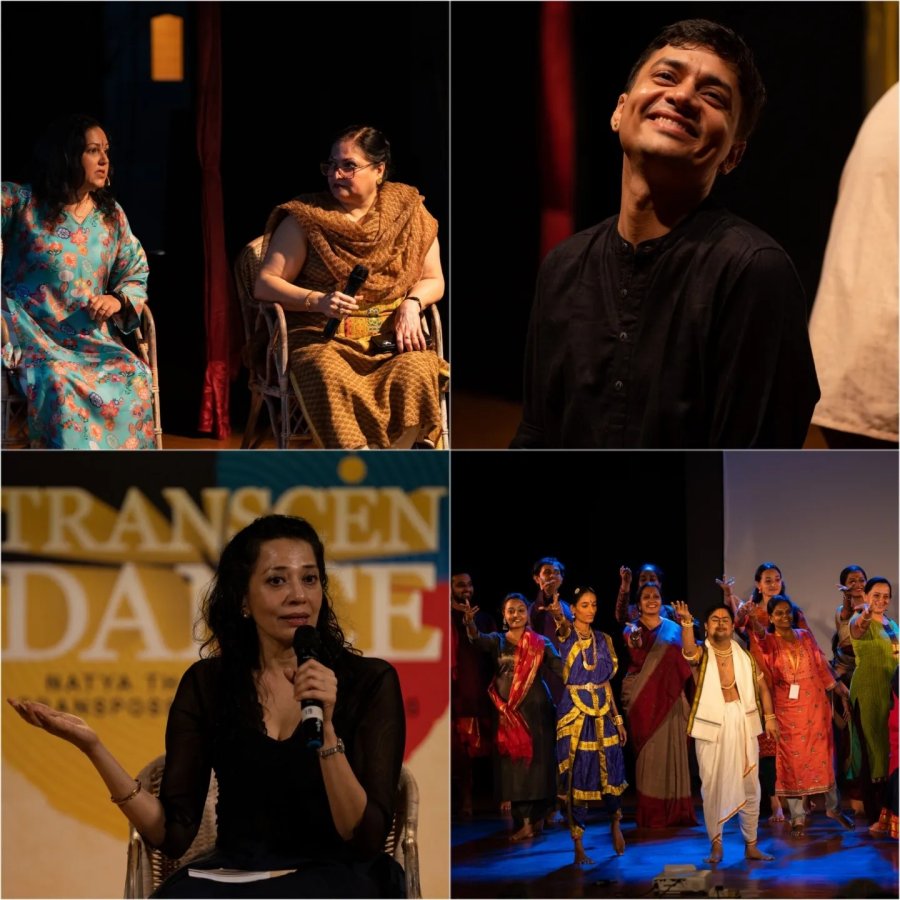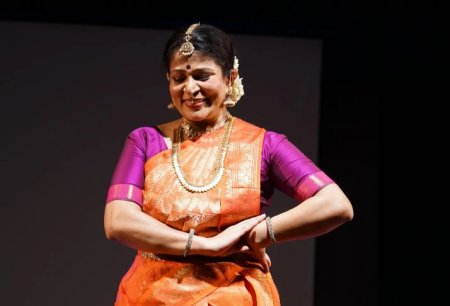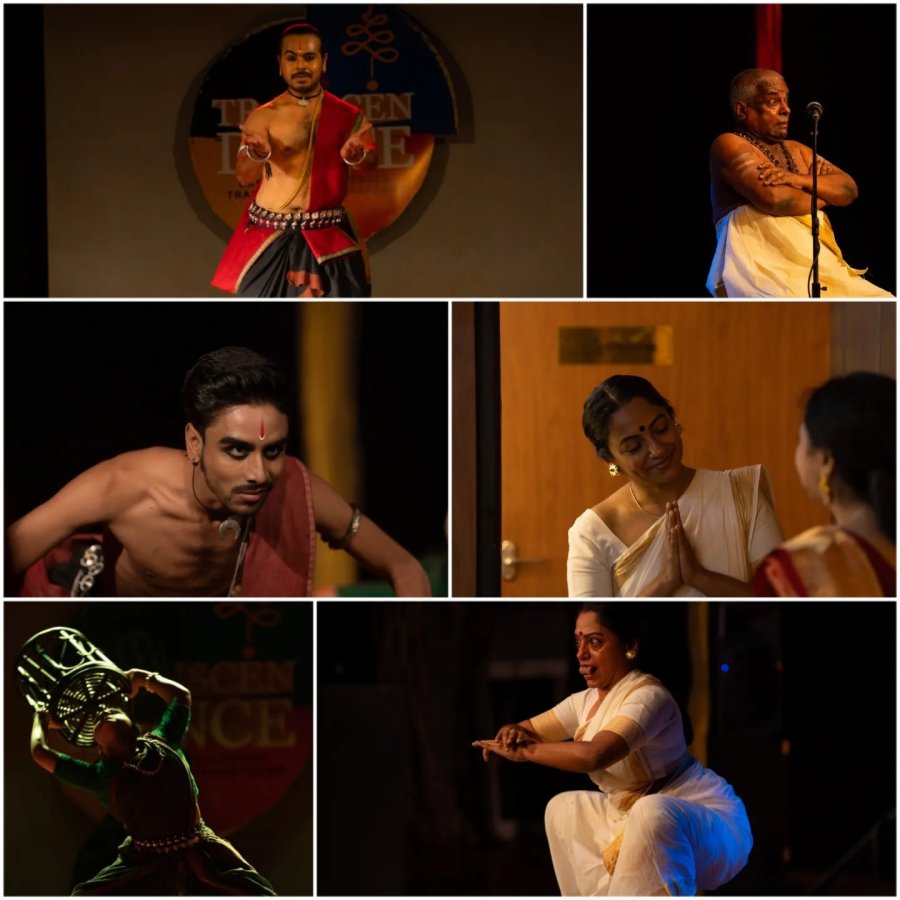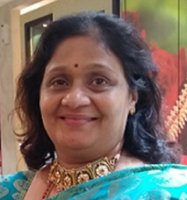
|   |

|   |
NKC 2023 - views of a (deferred streaming) Rasika - Chandra Anand e-mail: chandra6267@yahoo.co.in Photos courtesy: NKC 2023 March 20, 2024 At the outset, let me congratulate Rama Vaidyanathan on her very successful curatorship of the Natya Kala Conference for three years. She has managed to reach out to the audience many topics that hold the essence of the classical dance performance area and recently other areas where Bharatanatyam has made its rejuvenating efforts as therapy, has reached out new dimensions as modern dance, cultural integrity and the cultural ethos of many other countries too. Well, the deferred streaming has helped many rasikas to view the lec-dems in the comfort of their homes at a leisurely pace.  Though one was happy and amazed to see the reach of our classical arts far and wide, one also got the feel that all is not right with the classical dances repertoire and practice. In the panel discussion, during interaction, it was indicated that practice of dance and theory didn't go hand in hand and the Bharatanatyam margam had many faults which had to be revised and made good for the modern age. In India, most of the followers of the classical styles of Indian dance move with a conviction that Bharatanatyam is a great classical dance form. One needs only to understand the wholesomeness of the margam structure and perform it projecting all its grandeur and magnificence. The sutra is already given, a correct proportion of mix of the elements of natya, nritya and abhinaya is the essence of the Bharatanatyam margam. Its philosophy is to rise from corporeal to spiritual. The Quartet who has been acclaimed to have codified it would write and compose songs and music and also set the dance choreography themselves for their margam presentation. It is very indigenous and instinctive work of theirs and times they lived in. The design of the margam format and its visual presentation has been compared to the designs of the carpet. The centre of the carpet design is the main motif and its size and design reduce as it is moves to the corners of the carpet. In classical music vocabulary one compares it to the mridanga yati. It is not that the items they codified into a presentation didn't exist. They modified all the existing structures to give newly made structures to suit their tastes and aesthetics. This codified presentation is now very much part of any traditional training practices of Bharatanatyam. How much has been understood and imbibed by the present practitioners is to be researched and evaluated. Have they managed to acquire the necessary knowledge and enough practice to be able to wield the powers of lyrics, music and dance choreography for a margam presentation, all together in a person? Finally the best art is definitely the one that looks natural, instinctive and homogeneous. Also the Indian practitioners attach great value to the treatise of the Natya Sastra. It is believed that it is a book that codifies the science of art presentation. If we go by this theory of "exhaustion" presented by the participants, the question is, does exhaustion function as a vyabhichari, satvika or rasa bhava? And why is practice boring? Practice helps the body to form habits, muscle memory, understand essence of the movements, and to experience the joy in movements of the adavu, korvai and jathi while dancing them. Practice is needed to taste the beauty that lies within the cadences of movements and its rhythms that come in the vocabulary and framework of the particular art of classical dance. The idea of "transcendance" by Masoom Parmar was a surprise. It is a piece of dance choreography, shining as an example piece for the motto "art for art's sake" where art crossed religious boundaries. The azaan music was background to the Alarippu done, more like Pallavi of Odissi dance style. A major subject touched upon was to see use of dance for transformation of the challenged community. It is really heartwarming to see the attempts to work with the ailing persons and give them an opportunity to improve their mind and body. A meditative experience is attained when people focus on doing movements with music. It creates pleasure in their mind and a happy disposition is attained. A suggestion - Perhaps after training them to focus and rehabilitate their limbs with requisite body movements, the use of pantomime art added to their pedagogy will enhance the artistic abilities of the rehabilitees.  Hrishikesh Pawar  Divya Devaguptapu Hats off to Divya Devaguptapu! Her exposition on Kshetrayya padams and on philosophical concept of jivatma - paramatma was highly remarkable. Hats off to Guru G Venu too!! His research on breathing techniques for abhinaya, definitely is a path breaking effort. Like he said, no exposition of breathing techniques is there in the treatises available. But if one looks carefully indications are given everywhere. Well, his experience in dance and strong intuition for a need to research on breathing techniques has been very successful and need of the hour.  It was a treat to see and hear Rajika Puri's lec-dem. To many, theatre is another form of art. A combination of the features of music, dance and storyline is a "musical". To make a point with abhinaya can perhaps be called 'dancical'? Mythili Prakash gave a presentation where a concept like the women are goddesses was touched upon. Here, she went on to show the difficulties of growth of a woman or transcendence of women into many roles in her lifetime. What is it that made her choose a concept like this, what the inspiration for this subject was, what all thoughts and emotions she passed through while conceptualizing and choreographing this piece of work are all questions left unanswered. The Balinese collaboration was refreshing, claiming to have made history using Chinese ensemble for music where Indian ragas were used. Best wishes for many, many presentations. On the whole, a great time viewing videos of NKC 2023.  Chandra Anand is a Bharatanatyam artiste and teacher. She has an MA in Bharatanatyam from Tilak Maharashtra Vidyapeeth, and her series on 'Education in spiritual values through Bharatanatyam' is featured in narthaki.com. |